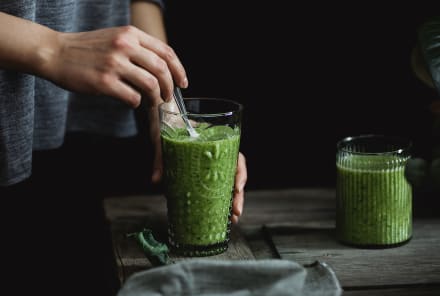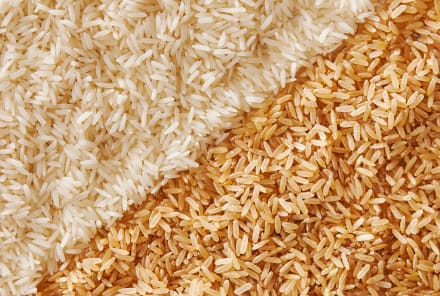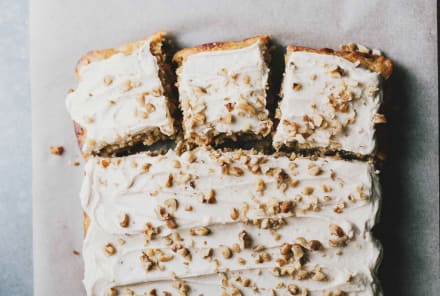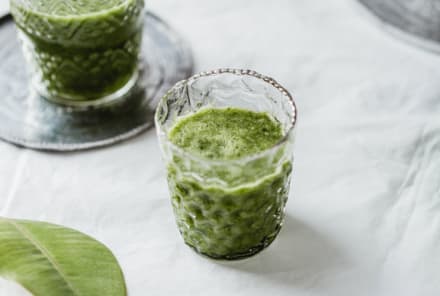Advertisement
Exactly What To Eat For Glowing Skin, Based On Your Personal Dosha

Sahara Rose is an author currently living in Los Angeles, California.
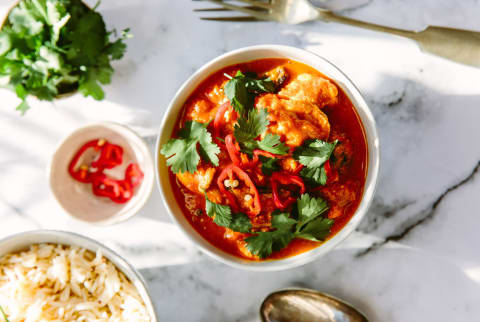
We all have that friend whose skin seems to always be radiating, even after a night out with a few too many glasses of wine. It may be your sister, your colleague, or your yoga teacher, and you cannot seem to stop wondering how their skin is literally perfect 24/7. Are they getting weekly facials or using $200 night cream? Most likely, the answer is they're eating right for their mind-body type.
As the best-selling author of The Idiot’s Guide to Ayurveda and the upcoming book, Eat Feel Fresh: A Contemporary Plant-Based Approach to Ayurveda Cookbook, I have studied and practiced endless ayurvedic principles, and I have found the best way to achieve flawless, glowing skin is by focusing on what you eat.
According to ayurveda, your skin is a reflection of your internal health. In ayurveda, it' not that you are what you eat, but rather you are what you digest. When you eat the foods that your body thrives on, your skin reflects that radiant glow. When you eat foods that may seem healthy but your body isn't actually processing, you're going to notice the subtle differences in your face.
For some, that's acne, which is a pitta imbalance. For others, that's dryness, which is a vata imbalance. For others, it's congested skin, which is a kapha imbalance. However, each dosha has the potential for radiant health and skin to match.
What is ayurveda, and what's a dosha?
Ayurveda is one of the world's oldest health systems, and it originated in India 5,000 years ago. Since then, individuals have been applying ayurvedic principles to their daily life, and the results have stood the test of time. As the sister science of yoga, ayurveda focuses on holistic health and sacred self-care. Rather than a one-size-fits-all approach, ayurveda focuses on balancing your unique dosha (energies) for mental and physical benefits, like glowing skin.
The word dosha means "energy" in ayurveda, and they consist of the master elements—air + space (vata), fire + water (pitta) and earth + water (kapha). As we are each different, each all have a different doshic constitutions with varying ratios of vata, pitta, and/or kapha.
Because every dosha contains different elements, it only makes sense that each dosha requires different types of food to find balance. Before I dive into which foods are best for each dosha, let me go over how each dosha physically manifests on our skin.
Dry skin means you're vata dominant.
Do you feel like your skin drinks moisturizer? Do you rarely see a blemish on your face? Have you already found early signs of aging, like a fine line on your forehead? If you answered yes to any of these, chances are you are vata skin type.
Those with a vata skin type struggle with excess dryness, which can lead to the premature onset of wrinkles. As vata is comprised of air and space, vata skin is naturally dry, but that is not always a bad thing. Vatas do not normally break out, which is definitely a plus!
Have oily skin? You might be pitta dominant.
For those who seem to never be able to rid themselves of that blemish or have endless amounts of beauty marks, like freckles, you most likely have pitta skin. As pitta is made up of fire and water, the predominating element of fire makes pitta skin more apt to acne, sun sensitivity (freckles), and inflammation. Pitta skin is especially sensitive to perfumed and/or products that have harsh chemicals as a main ingredient. Most often, pitta skin can be a combination but lean toward a more oily complexion.
Combination skin signifies a kapha dosha.
If neither of these resonated with you, you most likely have a kapha skin type. Kaphas are mainly earth and water, so these grounding qualities make it so kapha skin rarely needs moisturizer and will likely not see signs of aging until much later in life. Some say that kaphas' combination of earth and water make it the lottery winner of skin types. Yet the excess oil that is produced from a kapha skin type make it so they are likely to experience oily T-zones or congested skin with whiteheads and bumps under the surface layer of their skin when imbalanced.
How to eat for glowing skin, based on your dosha.
For vata skin, you will need to combat the dry nature with warm and grounding foods, such as coconut oil and avocado, which have very hydrating fats. In addition, warming foods, like soups and stews, are really beneficial. Next time you are feeling an ice-cold sip of water, try drinking warm water instead. Avoid drier foods, like beans, raw vegetables, and crackers.
As pitta is mainly fire, it is important to avoid spicy, sour, and pungent foods. Instead, pittas should have sweet and cooling foods. The best foods to balance a pitta imbalance would be sweet fruits (apricots, bananas, and cherries) and grains (barley, quinoa, and oats).
And lastly, kapha skin types should include lighter foods in their diet, such as artichokes, spinach, apples, lemons, lentils, and chickpeas. These are all great foods to counteract the naturally oily and heavy tendencies of kapha skin. The main foods to avoid would be dense foods like pastas, avocados, and wheat.
No matter your doshic constitution, radiant and glowing skin is within reach when you incorporate ayurvedic wisdom into your day-to-day diet.

Sahara Rose is an author currently living in Los Angeles, California. She authored two books on ayurveda Eat Feel Fresh: A Plant-Based Ayurvedic Cookbook and Idiot's Guide to Ayurveda, both with foreword by Dr. Deepak Chopra. She has been featured in Vogue, Forbes, Yoga Journal, Huffington Post, and NBC News. She was also the featured nutrition speaker at Michelle Obama’s Let’s Move! event at Harvard Medical School.

Sahara Rose is an author currently living in Los Angeles, California. She authored two books on ayurveda Eat Feel Fresh: A Plant-Based Ayurvedic Cookbook and Idiot's Guide to Ayurveda, both with foreword by Dr. Deepak Chopra. She has been featured in Vogue, Forbes, Yoga Journal, Huffington Post, and NBC News. She was also the featured nutrition speaker at Michelle Obama’s Let’s Move! event at Harvard Medical School.
Watch Next
Enjoy some of our favorite clips from classes
Enjoy some of our favorite clips from classes
What Is Meditation?
Mindfulness/Spirituality | Light Watkins
Box Breathing
Mindfulness/Spirituality | Gwen Dittmar
What Breathwork Can Address
Mindfulness/Spirituality | Gwen Dittmar
The 8 Limbs of Yoga - What is Asana?
Yoga | Caley Alyssa
Two Standing Postures to Open Up Tight Hips
Yoga | Caley Alyssa
How Plants Can Optimize Athletic Performance
Nutrition | Rich Roll
What to Eat Before a Workout
Nutrition | Rich Roll
How Ayurveda Helps Us Navigate Modern Life
Nutrition | Sahara Rose
Messages About Love & Relationships
Love & Relationships | Esther Perel
Love Languages
Love & Relationships | Esther Perel

